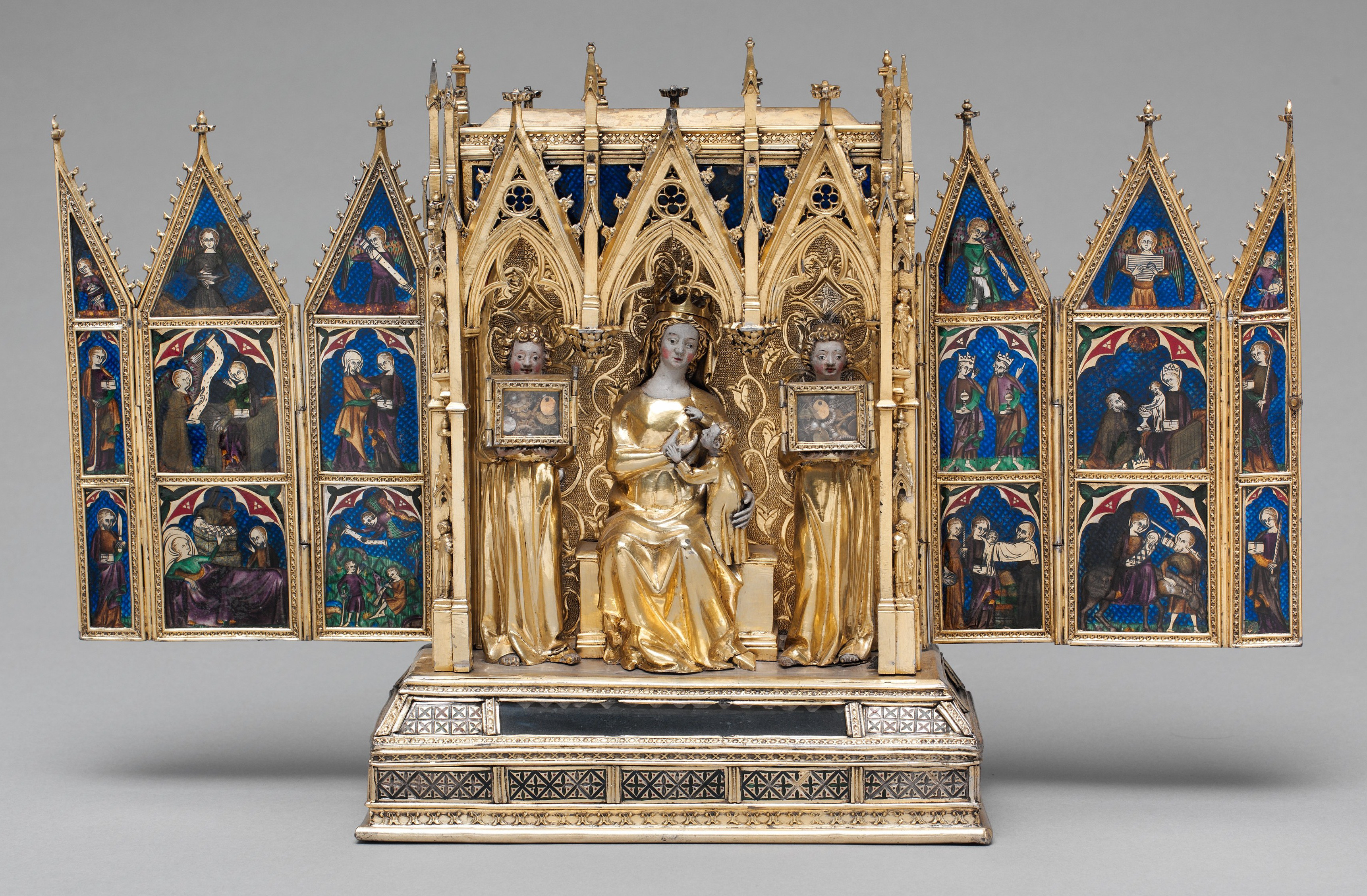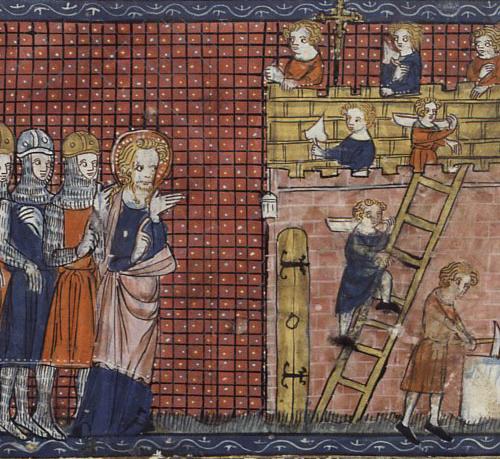|
Sant Benet De Bages
The Monastery of Sant Benet de Bages is a former Benedictine monastery, in the ''comarca'' of Bages, Catalonia, Spain. The Romanesque monastery was thoroughly restored at the beginning of the twentieth century by the Catalan architect Josep Puig i Cadafalch. History The monastery was founded about 950 by the noble Salla and his consort Ricarda, of the house of the viscounts of Osona. According to the founding legend, Salla traveled to Rome to have his institution authorized, and to have it depend directly on the Holy See, the usual method for preserving the community from interference from the bishop— in this case of Vic— in whose diocese it lay. The abbey church was consecrated 3 December 972, witnessed by a gathering of notables: Borrell II, Count of Barcelona, the bishops Frugifer of Vic, Guisad of Urgell and Pere of Barcelona, the viscount Guadald of Osona, and three of the four offspring of the recently deceased founder, his son Isarn and the sisters Quíxol and Ego, at ... [...More Info...] [...Related Items...] OR: [Wikipedia] [Google] [Baidu] |
Sant Benet1
Sant may refer to: People * Alfred Sant (born 1948), Maltese politician * Andrew Sant (born 1950), English-born Australian poet * David Sant (born 1968), Catalan director, actor and writer * Indira Sant (1914–2000), Indian poet * James Sant (1820–1916), British painter * Lorry Sant (1937–1995), Maltese politician Places * Sant State, a former princely salute state in Rewa Kantha, Gujarat, India * Sant, Övörkhangai, a district in Mongolia * Sant, Selenge, a district in Mongolia * Șanț, a commune in Bistriţa-Năsăud County, Romania * Șanț River, a tributary of the Trotuş River in Romania Religion * Sant (religion), in Hinduism, Jainism, and Buddhism, an enlightened human being, commonly translated as "Saint" * Sant Joan (other) Other * Sant (card game), an early name for the game of Piquet * Sant tree (''Acacia nilotica''), a tree species found in Africa * Teniente General Benjamín Matienzo International Airport, Argentina (ICAO code: SANT) See a ... [...More Info...] [...Related Items...] OR: [Wikipedia] [Google] [Baidu] |
Benedict Of Nursia
Benedict of Nursia (; ; 2 March 480 – 21 March 547), often known as Saint Benedict, was a Great Church, Christian monk. He is famed in the Catholic Church, the Eastern Orthodox Church, the Lutheran Churches, the Anglican Communion, and Old Catholic Churches. In 1964, Pope Paul VI declared Benedict a Patron saints of Europe , patron saint of Europe. Benedict founded twelve communities for monks at Subiaco, Lazio , Subiaco in present-day Lazio, Italy (about to the east of Rome), before moving southeast to Monte Cassino in the mountains of central Italy. The present-day Order of Saint Benedict emerged later and, moreover, is not an religious order , "order" as the term is commonly understood, but a confederation of autonomous Congregation (group of houses) , congregations. Benedict's main achievement, his ''Rule of Saint Benedict'', contains a set of Decree (canon law), rules for his monks to follow. Heavily influenced by the writings of John Cassian ( – ), it shows st ... [...More Info...] [...Related Items...] OR: [Wikipedia] [Google] [Baidu] |
Black Death
The Black Death was a bubonic plague pandemic that occurred in Europe from 1346 to 1353. It was one of the list of epidemics, most fatal pandemics in human history; as many as people perished, perhaps 50% of Europe's 14th century population. The disease is caused by the Bacteria, bacterium ''Yersinia pestis'' and spread by Flea, fleas and through the air. One of the most significant events in European history, the Black Death had far-reaching population, economic, and cultural impacts. It was the beginning of the second plague pandemic. The plague created religious, social and economic upheavals, with profound effects on the course of European history. The origin of the Black Death is disputed. Genetic analysis suggests ''Yersinia pestis'' bacteria evolved approximately 7,000 years ago, at the beginning of the Neolithic, with flea-mediated strains emerging around 3,800 years ago during the late Bronze Age. The immediate territorial origins of the Black Death and its outbreak ... [...More Info...] [...Related Items...] OR: [Wikipedia] [Google] [Baidu] |
Moors
The term Moor is an Endonym and exonym, exonym used in European languages to designate the Muslims, Muslim populations of North Africa (the Maghreb) and the Iberian Peninsula (particularly al-Andalus) during the Middle Ages. Moors are not a single, distinct or Ethnonym, self-defined people. Europeans of the Middle Ages and the early modern period variously applied the name to Arabs, Berbers, and Islam in Europe, Muslim Europeans. The term has been used in a broader sense to refer to Muslims in general,Menocal, María Rosa (2002). ''Ornament of the World: How Muslims, Jews and Christians Created a Culture of Tolerance in Medieval Spain''. Little, Brown, & Co. , p. 241 especially those of Arab or Berber descent, whether living in al-Andalus or North Africa. The 1911 ''Encyclopædia Britannica'' observed that the term had "no real ethnological value." The word has racial connotations and it has fallen out of fashion among scholars since the mid-20th century. The word is also used ... [...More Info...] [...Related Items...] OR: [Wikipedia] [Google] [Baidu] |
Narbonne
Narbonne ( , , ; ; ; Late Latin:) is a commune in Southern France in the Occitanie region. It lies from Paris in the Aude department, of which it is a sub-prefecture. It is located about from the shores of the Mediterranean Sea and was historically a prosperous port. From the 14th century it declined following a change in the course of the river Aude. While it is the largest commune in Aude, the capital of the Aude department is the smaller commune of Carcassonne. Etymology The source of the town's original name of Narbo is lost in antiquity, and it may have referred to a hillfort from the Iron Age close to the location of the current settlement or its occupants. The earliest known record of the area comes from the Greek Hecataeus of Miletus in the fifth century BC, who identified it as a Celtic harbor and marketplace at that time, and called its inhabitants the ''Ναρβαῖοι''. In ancient inscriptions the name is sometimes rendered in Latin and sometimes transl ... [...More Info...] [...Related Items...] OR: [Wikipedia] [Google] [Baidu] |
Navarcles
Navarcles () is a municipality in the province of Barcelona and autonomous community of Catalonia Catalonia is an autonomous community of Spain, designated as a ''nationalities and regions of Spain, nationality'' by its Statute of Autonomy of Catalonia of 2006, Statute of Autonomy. Most of its territory (except the Val d'Aran) is situate ..., Spain. The municipality covers an area of and the population in 2014 was 6,003. Demography According to Spanish census data, this is the population of Navarcles in recent years. References External links Government data pages Municipalities in Bages {{Barcelona-geo-stub ... [...More Info...] [...Related Items...] OR: [Wikipedia] [Google] [Baidu] |
Reliquary
A reliquary (also referred to as a ''shrine'', ''Chasse (casket), chasse'', or ''phylactery'') is a container for relics. A portable reliquary, or the room in which one is stored, may also be called a ''feretory''. Relics may be the purported or actual physical remains of saints, and may comprise bones, pieces of clothing, or some object associated with saints or with other religious figures. The authenticity of any given relic is often a matter of debate; for that reason, some churches require documentation of a relic's provenance. Relics have long been important to Buddhism, Buddhists, Christianity , Christians, Hinduism , Hindus, and to followers of many other religions. These cultures often display reliquaries in shrines, churches, or temples to which the faithful make pilgrimages to gain blessings. The term is sometimes used in a looser sense to mean a container for the remains of any important figure, even non-religious ones. In particular, the kings of France often spe ... [...More Info...] [...Related Items...] OR: [Wikipedia] [Google] [Baidu] |
Saint Valentine
Saint Valentine (; ) was a 3rd-century Roman saint, commemorated in Western Christianity on February 14 and in Eastern Orthodoxy on July 6. From the High Middle Ages, his feast day has been associated with a tradition of courtly love. He is also a patron saint of Terni, epilepsy, and beekeepers. Saint Valentine was a clergymaneither a priest or a bishopin the Roman Empire who ministered to persecuted Christians.. He was martyred and his body buried on the Via Flaminia on February 14, which has been observed as the Feast of Saint Valentine (Saint Valentine's Day) since at least the eighth century. Relics of him were kept in the Church and Catacombs of San Valentino in Rome, which "remained an important pilgrim site throughout the Middle Ages until the relics of St. Valentine were transferred to the church of Santa Prassede during the pontificate of Nicholas IV". His skull, crowned with flowers, is exhibited in the Basilica of Santa Maria in Cosmedin, Rome. Other relics of h ... [...More Info...] [...Related Items...] OR: [Wikipedia] [Google] [Baidu] |
Kinship
In anthropology, kinship is the web of social relationships that form an important part of the lives of all humans in all societies, although its exact meanings even within this discipline are often debated. Anthropologist Robin Fox says that the study of kinship is the study of what Human, humans do with these basic facts of lifemating, gestation, Parenting, parenthood, socialization, siblingship etc. Human society is unique, he argues, in that we are "working with the same raw material as exists in the animal world, but [we] can conceptualize and categorize it to serve social ends." These social ends include the socialization of children and the formation of basic economic, political and religious groups. Kinship can refer both to the patterns of social relationships themselves, or it can refer to the study of the patterns of social relationships in one or more human cultures (i.e. kinship studies). Over its history, anthropology has developed a number of related concepts an ... [...More Info...] [...Related Items...] OR: [Wikipedia] [Google] [Baidu] |
Proprietary Church
During the Middle Ages, a proprietary church (Latin ''ecclesia propria'', German ''Eigenkirche'') was a church, abbey or cloister built on private ground by a feudal lord, over which he retained proprietary interests, especially the right of what in English law is "advowson", that of nominating the ecclesiastic personnel. History In the later Roman Empire the church had been centrally organized: all monasteries and churches within a diocese, including their personnel and their properties, were under the jurisdiction of the local bishop. As early as the late 5th century, Pope Gelasius I listed conditions under which bishops could consecrate new churches within the metropolitan see of Rome. One of the conditions was that the new establishment be endowed with sufficient means to provide for vestments, lights, and the support of the priest serving there. [...More Info...] [...Related Items...] OR: [Wikipedia] [Google] [Baidu] |
Abbot
Abbot is an ecclesiastical title given to the head of an independent monastery for men in various Western Christian traditions. The name is derived from ''abba'', the Aramaic form of the Hebrew ''ab'', and means "father". The female equivalent is abbess. Origins The title had its origin in the monasteries of Egypt and Syria, spread through the eastern Mediterranean, and soon became accepted generally in all languages as the designation of the head of a monastery. The word is derived from the Aramaic ' meaning "father" or ', meaning "my father" (it still has this meaning in contemporary Arabic: أب, Hebrew: אבא and Aramaic: ܐܒܐ) In the Septuagint, it was written as "abbas". At first it was employed as a respectful title for any monk, but it was soon restricted by canon law to certain priestly superiors. At times it was applied to various priests, e.g. at the court of the Frankish monarchy the ' ("of the palace"') and ' ("of the camp") were chaplains to the Merovingian ... [...More Info...] [...Related Items...] OR: [Wikipedia] [Google] [Baidu] |





